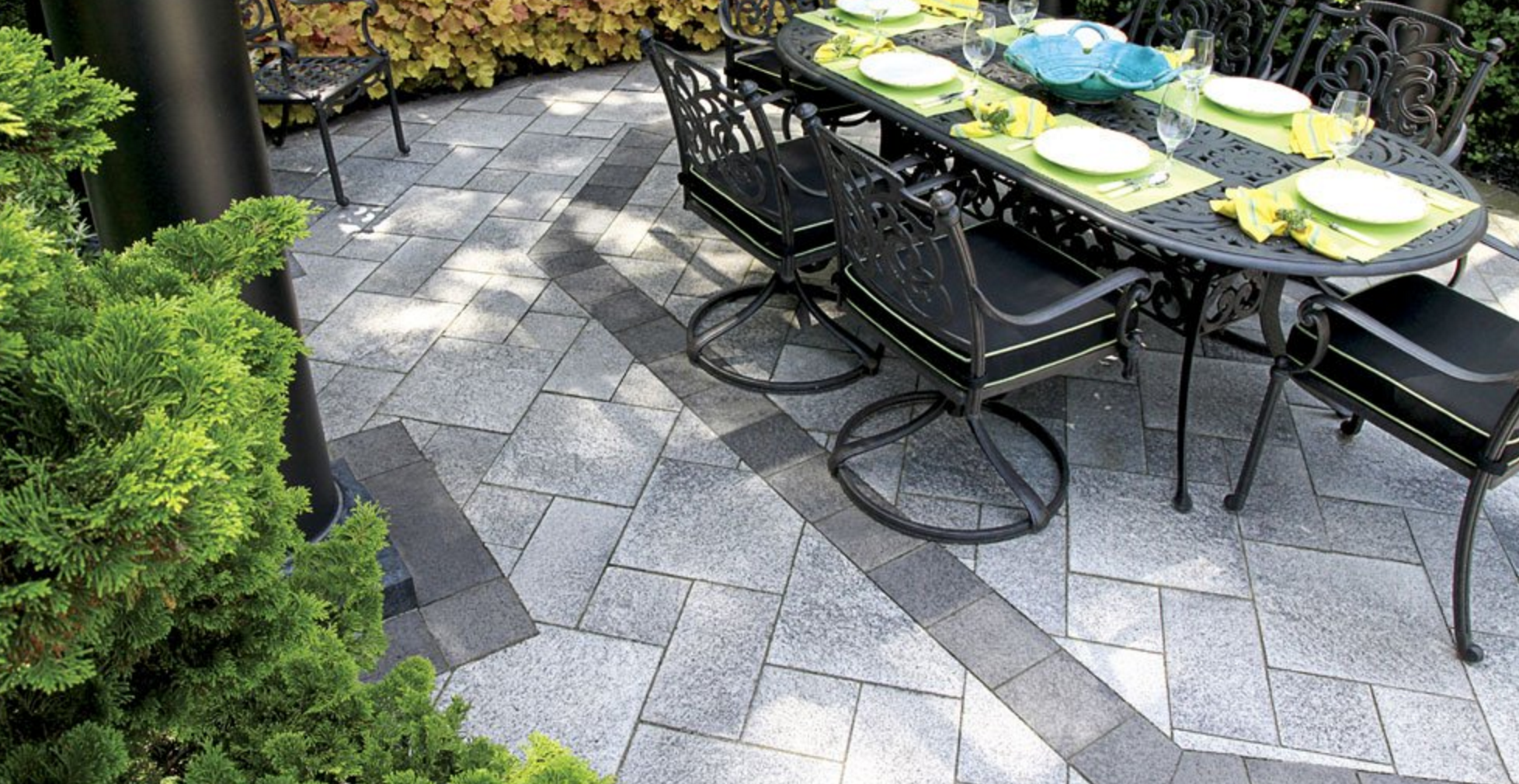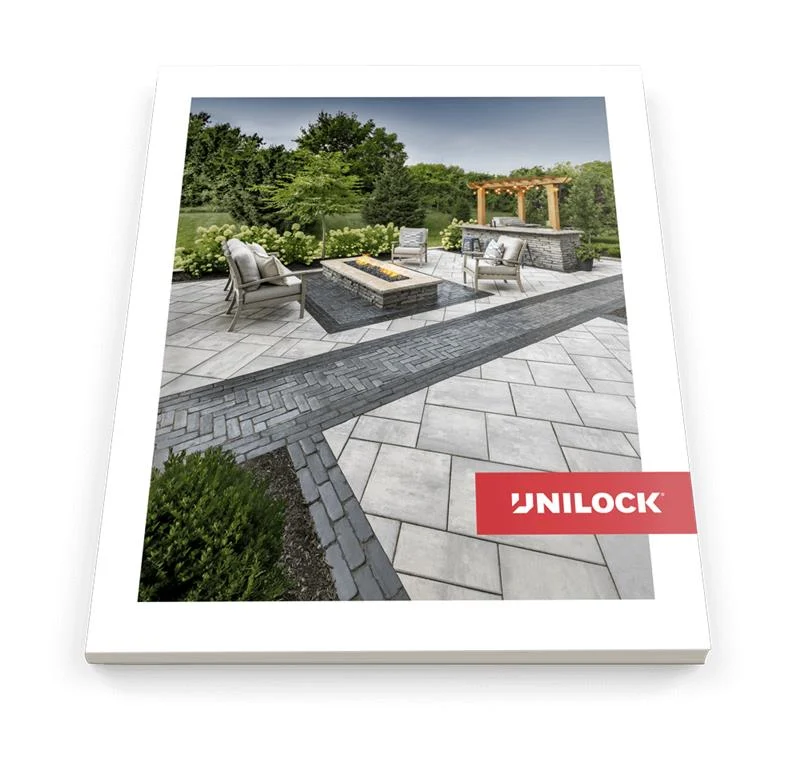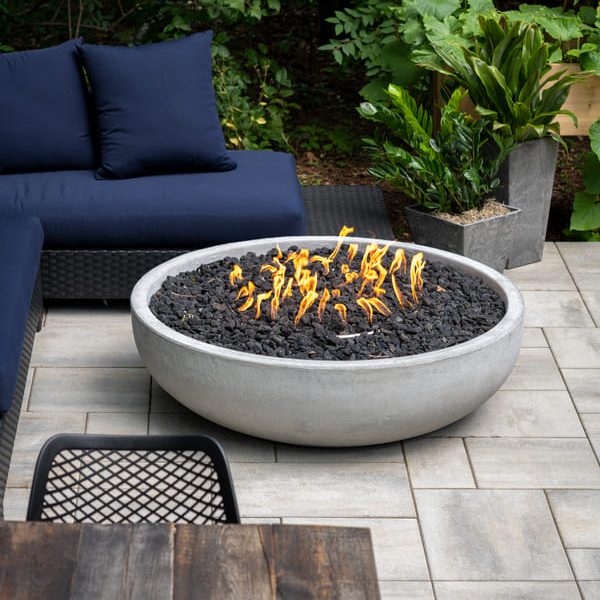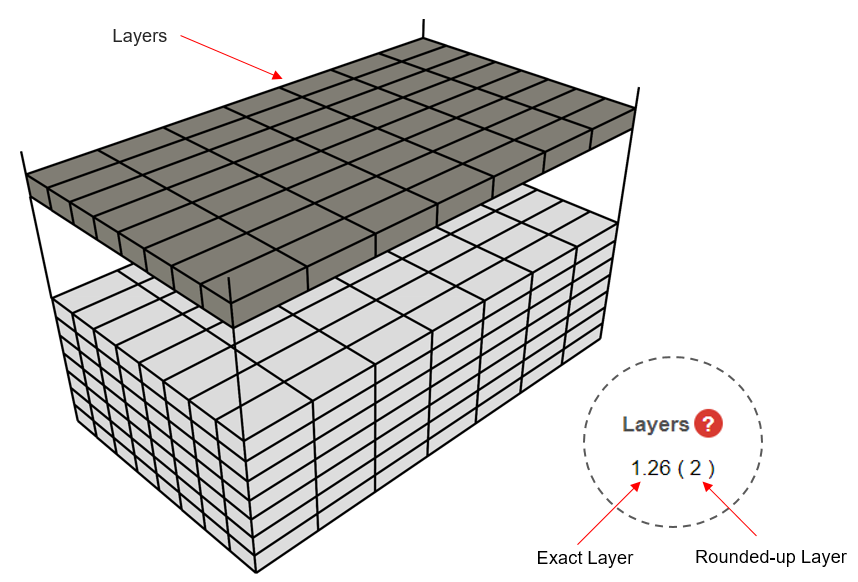
No home renovation is complete without the addition of an outdoor entertainment area. Despite all the decorative potential that outdoor furniture and lighting features have to offer, the stone beneath your feet can have the most powerful impact on your patio. There are several stone design techniques with which you can create the unique, elaborate patio of your dreams.
Borders and Banding
A hardscape design can make or break your outdoor oasis – and sometimes it needs to be broken—the paving transitions that is. An exceptionally large patio requires something to interrupt all its open space. This is where borders and banding are essential. These strips of patio stone are used to enclose areas or adorn vertical features such as low retaining walls. You have the freedom to customize the thickness of these paver borders, as well as the colour combinations they create. Selecting a colour that complements the surrounding stone creates a cohesive impression overall. The majestic impact of Unilock’s Series 3000 product, especially in black granite colour, can be the perfect accent to a large expanse of Granite Fusion Artline pavers from Unilock. Alternatively, contrasting borders can amplify elements of your existing patio – for example, a burgundy red border accentuates the warm undertones of a sandstone colour palate.
Keep the surrounding architecture in mind when selecting your patio stone as you will create either a balance or contrast – both of which can be equally incredible. Create a subtle harmony in your landscape by reflecting the colour scheme of your house’s exterior finishes in the jointing sand between patio stones.
Highlighting outdoor living areas
Borders subliminally separate individual areas, adding variation to a large patio that would otherwise be too monotonous. This makes groups of furniture, such as a dining area and benches around a fire pit, look more substantiated. Matching the banding on grill islands and fire features to the borders separating them can add consistency to the design. When paving a large area with little vegetation, it is common for an all grey patio stone, for instance, to overwhelm the character of the space and impose an industrial quality. This can be avoided by opting for the earthy tone found in Unilock’s Almond Grove Beacon Hill Flagstone or Desert Sand Brussels Block Pavers.
Placing grill islands or water features on raised platforms can add variation to a large patio as well. You can lay a rectangle or elaborate pattern of bolder stone in an expanse of muted stone, flush with its surface. These inlays serve as ‘rugs’ underneath dining tables or focal points in unfurnished spaces. Although boldly coloured patio stone can have an unexpected and aesthetically pleasing impact, it is worthy to note that they can date a project much faster.
Incorporating vegetation
Large patios can also be broken by ‘green space’ – plant beds that incorporate the softer tones of nature and often make an area more tranquil. Allowing the growth of petite plant life between paving stones increases the permeability of the surface. This means that rainwater will be absorbed into the ecosystem rather than run off into storm water drains. These foliage joints can also add a natural, rustic atmosphere to a patio enclosed by weeping willows and thriving ferns. If you are determined to help the environment, yet cringe at the rugged chaos brought about by plants between your pavers, there are many permeable paving stones such as Unilock’s Eco-Priora and Thornbury products that will allow you to go green without your patio stone following suit.









